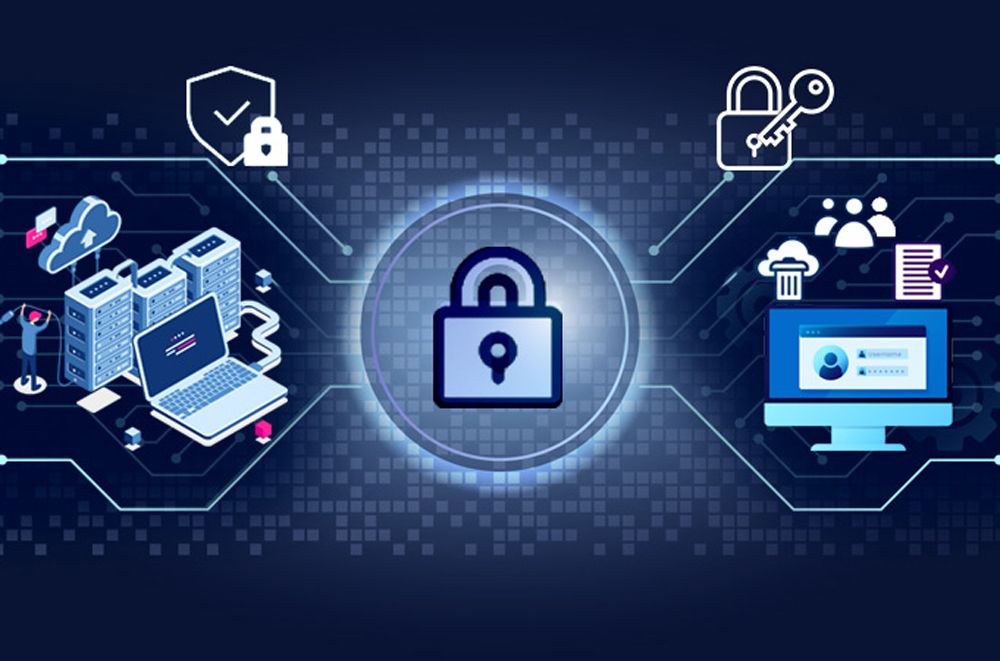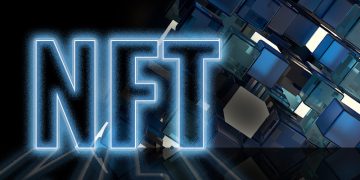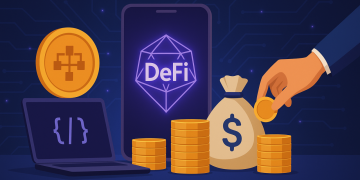As blockchain technology continues to gain traction across various industries, one of the most prominent claims is its ability to provide unparalleled data security. Blockchain is widely celebrated for its immutable ledger, decentralized nature, and cryptographic protections, which together are said to create a virtually unhackable and tamper-proof system. However, the question remains: Can blockchain truly guarantee 100% data security?
While blockchain does provide several robust mechanisms for securing data, it’s important to understand that no system can be completely immune to all types of risks. In this article, we will explore how blockchain enhances security, its limitations, and the factors that may influence its ability to safeguard data against potential threats.
1. What Makes Blockchain Secure?
To assess the security of blockchain, it’s important to first understand how it works. At its core, blockchain is a decentralized, distributed ledger that records transactions in a transparent, immutable way. It is primarily composed of three key features that contribute to its security:
a) Decentralization
Traditional centralized systems store data in a single location, which makes them vulnerable to hacking, data corruption, or unauthorized access. In contrast, blockchain is decentralized, meaning that data is distributed across a network of computers (also known as nodes). Each node holds a copy of the entire blockchain ledger, which makes it difficult for a hacker to manipulate or alter data without being detected.
- No Single Point of Failure: Because blockchain data is stored across multiple nodes, there is no central point that can be targeted. To successfully alter the data, an attacker would need to gain control of more than 50% of the network, a difficult task, particularly in large, well-established blockchain networks like Bitcoin or Ethereum.
b) Cryptographic Hashing
Every transaction or data block recorded on a blockchain is secured using cryptographic hashing. A cryptographic hash is a one-way function that transforms any input (such as transaction data) into a fixed-length string of characters. These hashes are unique, meaning even a minor change in the data would produce a completely different hash.
- Immutability: Once a block is added to the blockchain, the hash of that block is recorded and linked to the next block, forming a chain. If an attacker tries to alter any information in a previous block, the hash of that block will change, which would break the chain and immediately signal tampering.
c) Consensus Mechanisms
Blockchain networks rely on consensus mechanisms, such as Proof of Work (PoW) or Proof of Stake (PoS), to verify and validate transactions. These mechanisms ensure that only legitimate transactions are added to the blockchain. Consensus ensures that all nodes in the network agree on the state of the ledger and that no malicious actor can manipulate the transaction history.
- Security Through Agreement: In PoW, for example, miners compete to solve complex mathematical puzzles, which requires substantial computational power. This makes it extremely difficult for a single actor to alter the blockchain without being detected by other participants.
2. Blockchain’s Limitations in Data Security
While blockchain offers significant security advantages, there are several limitations that prevent it from guaranteeing 100% data security:
a) Human Error and Social Engineering
Even though blockchain systems themselves are highly secure, the users interacting with these systems are not always as secure. Human error, such as poorly managed private keys, phishing attacks, or social engineering tactics, can lead to significant vulnerabilities.
- Private Key Security: Access to a blockchain network is usually controlled by a private key. If a user loses their private key or it is stolen, they lose access to their data or cryptocurrency stored on the blockchain. This vulnerability has led to the theft of millions of dollars’ worth of cryptocurrencies.
- Phishing and Fraud: Fraudulent schemes targeting blockchain users can compromise data security. For example, users may fall victim to phishing attacks that trick them into revealing their private keys or login credentials for blockchain-based platforms.
b) 51% Attacks
In decentralized blockchain networks, such as Bitcoin, a 51% attack occurs when a single entity or group of actors controls over 50% of the network’s computational power (in PoW) or staking power (in PoS). This allows the attacker to potentially rewrite transaction history, double-spend coins, and reverse transactions.
- Vulnerability in Smaller Networks: While Bitcoin and Ethereum are considered relatively secure, smaller or newer blockchain networks with lower hash power are more susceptible to 51% attacks. The cost of executing such an attack on larger networks is prohibitively high, but smaller networks may not have the resources to resist this kind of attack.
c) Smart Contract Bugs and Vulnerabilities
Smart contracts are self-executing contracts with the terms of the agreement directly written into lines of code. While they add significant utility to blockchain platforms, they also introduce new security risks. Errors in smart contract code, known as bugs, can lead to unintended consequences and vulnerabilities.
- Smart Contract Exploits: Malicious actors have exploited flaws in smart contract code to drain funds from decentralized applications (dApps) and DeFi protocols. One well-known example is the DAO hack on the Ethereum blockchain in 2016, where an attacker exploited a vulnerability in a smart contract to siphon off $50 million worth of Ether.
- Lack of Audit and Testing: Many smart contracts, especially in the rapidly growing DeFi space, are launched without comprehensive auditing. Without thorough code reviews, vulnerabilities can go unnoticed and lead to potential exploits.
d) Blockchain Forks and Governance Risks
Blockchain networks are governed by consensus among participants, but governance in blockchain systems is not always perfect. Disagreements over protocol upgrades or changes can lead to forks, where the blockchain splits into two different chains, each with its own set of rules.
- Hard Forks and Security Risks: When a blockchain undergoes a hard fork, the security of the network can be compromised temporarily. During the transition, there may be uncertainties regarding the legitimacy of transactions or the status of assets, leading to potential vulnerabilities or confusion among users.
e) External Vulnerabilities: Off-Chain Data
Blockchains are designed to store transaction data, but they are not well-suited to storing large amounts of external data. This introduces a gap in security when it comes to off-chain data. Data that resides outside the blockchain can still be susceptible to traditional security risks such as data breaches or manipulation.
- Oracles and External Data: DeFi platforms and smart contracts often rely on oracles to fetch off-chain data (e.g., the price of a stock or commodity). If the oracle is compromised or provides inaccurate data, it could lead to erroneous or malicious transactions on the blockchain.

3. When Can Blockchain Offer Near-100% Security?
While blockchain can’t guarantee 100% data security, it can come very close under certain circumstances. Here are some factors that can maximize blockchain’s security potential:
a) Large, Well-established Networks
Blockchain networks with a large number of nodes and high hash power, such as Bitcoin or Ethereum, are more resistant to attacks and manipulation. The decentralized nature and immense computing power required to compromise these networks make them highly secure.
- Proof of Work (PoW): Bitcoin’s PoW system makes it extremely difficult for any single entity to control the majority of the network. The computational costs of attacking the Bitcoin network are astronomical, making it practically impossible to manipulate the ledger.
b) Strong Private Key Management and Education
Blockchain security is highly dependent on how users manage their private keys. Implementing strong key management practices and educating users on the risks of phishing, social engineering, and poor security hygiene can significantly reduce the risk of data theft.
- Cold Storage: Storing private keys in offline, secure devices (cold storage) greatly reduces the risk of hacking. Multi-signature wallets also enhance security by requiring multiple approvals for transactions.
c) Regular Audits and Smart Contract Verification
For blockchain applications, especially in DeFi and NFT spaces, regular auditing and smart contract verification can help identify potential vulnerabilities before they can be exploited. Trusted third-party auditors can thoroughly test smart contracts for bugs and vulnerabilities to ensure they are secure.
- Automated Security Audits: Many blockchain platforms and development teams now use automated tools for smart contract security audits, significantly improving the reliability of code.
4. Conclusion: Blockchain and Security – Not Perfect, But Close
Blockchain technology provides powerful tools for ensuring data security, particularly due to its decentralized nature, cryptographic protections, and consensus mechanisms. These features significantly reduce the likelihood of data manipulation, fraud, or unauthorized access. However, it’s important to recognize that no system is 100% secure, and blockchain is no exception.
Blockchain’s security potential is highly dependent on the underlying infrastructure, user practices, and implementation. By addressing human error, securing private keys, mitigating smart contract vulnerabilities, and avoiding governance conflicts, blockchain can approach near-perfect security.
However, the combination of technical flaws, external attacks, and human risks means that complete and absolute security cannot be guaranteed. Blockchain can make data much more secure than traditional systems, but it’s important for businesses and users to remain vigilant and implement best practices to safeguard their assets and data.
















































